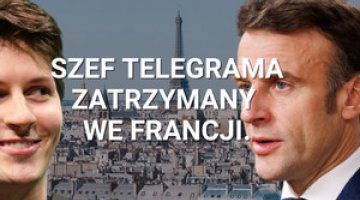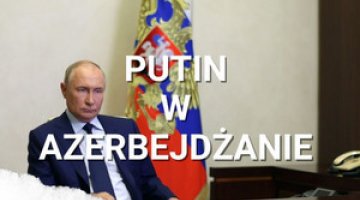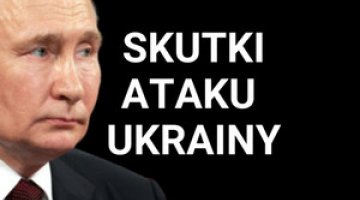The EU’s decision to use the profits generated by frozen Russian assets
On 21 May, the Council of the European Union approved a plan to allocate the profits generated by frozen Russian state assets to support Ukraine. Central securities depositories in the EU (national or international financial institutions managing the settlement of securities, such as stocks and bonds) holding Russian state assets and reserves exceeding €1 million will transfer the net profits earned from them since 15 February 2024 to aid Kyiv. The earnings generated before this date will be retained by the central depositories as a safeguard to cover the potential legal costs resulting from actions that Russia may take.
The EU’s decision will make it possible to allocate a total of €2.5–3 billion annually to support Ukraine, depending on the interest rates. Payments will be made in two tranches, and the first one is expected to be disbursed in June this year. 90% of these funds will go to the European Peace Facility (EPF), which finances military support from EU member states, and the remaining 10% will be used to address Ukraine’s other needs (including budget support and the reconstruction of the country).
In March 2022, following the Russian invasion of Ukraine, the G7 countries froze around €260 billion ($280 billion) of the Central Bank of Russia’s reserves held in Western currencies and securities, including €210 billion deposited in Europe, mostly with Belgium’s Euroclear (around €159 billion). The remaining funds are deposited in France, Switzerland, Luxembourg, the United Kingdom, Canada, Japan (although specific values have not been given), the US (around €4.5 billion) and other countries.
According to data provided by Euroclear, Russian state assets generated over €5 billion in net profit from the start of the Russian invasion of Ukraine up to 31 March 2024. Between 15 February 2024 (marking the beginning of the period when these funds can be transferred to Ukraine) to 30 April this year (the date of Euroclear’s latest report), €557 million were earned. It should be noted that Belgium has imposed a 25% tax on the income from Russian assets frozen by Euroclear. During 2023 this generated over €1 billion, and profits for 2024 are estimated at €1.7 billion. These funds are also to be transferred to Kyiv.
Commentary
- As the war drags on and the expenditures on support for Ukraine increase, a debate has erupted in the West about utilising the Russian state assets that have been frozen by G7 countries to this end. Several ways of using these funds are being considered. The least radical solution, which has just been accepted by the EU following several months of disputes, is to seize the profits from these assets—but only those generated after 15 February this year. Many of the national bonds in which the Russian funds were invested have already been redeemed. The money from this is held by depositories until it is withdrawn, without paying interest to the owner. The interest currently being generated therefore belongs to the depositories, and not to the Central Bank of Russia.
- The US has changed its stance on Russian assets and is now willing to utilise them for Ukraine’s needs, most likely due to domestic political problems with raising funds for further support to Kyiv. As a result, Washington is promoting much bolder solutions within the G7 to expedite and significantly increase aid to Ukraine. One idea is to issue $50 billion in liberty bonds based on the profits generated by the frozen assets. Another possible solution would be based on Ukraine issuing special debt securities (reparation bonds) which Western countries could purchase; these would only be repayable when Kyiv receives reparations for war damages (which would probably be financed with the frozen Russian assets). The most radical solution, however, involves the confiscation of all the assets that the Central Bank of Russia holds in the West. The G7 countries must act unanimously in order to implement any of these scenarios, and so far their opinions regarding this issue are divided. While the US, Canada and the United Kingdom are leaning towards full confiscation of the assets, this solution is not supported by France, Germany or Italy. Japan also fears that it could lead to international disputes.
- Although the idea of allocating profits from Russian assets to support Ukraine – unlike their confiscation – did not provoke any serious protests from EU countries, it took several months of negotiations to reach a compromise on this issue within the EU Council. The decision to allocate 90% of the profits (around €2.7 billion annually) to the EPF is especially important, as it alleviates concerns about a potential deficit in the EPF budget following changes in its financing, which were introduced under pressure from Germany (see ‘A fragile compromise on the EU’s additional military aid for Ukraine’). The breakthrough regarding allocating the interest from the assets also offers the supporters of confiscation a strong starting position to continue pushing through this more radical solution. One of the arguments, especially in discussions with the so-called frugal bloc (Germany, the Netherlands and the Nordic countries), could involve presenting this solution as a means of reducing the strain on the member states’ budgets.
- In the legal dispute over the legitimacy of confiscating the Russian state assets, proponents have referred to so-called countermeasures which can be employed in response to clear violations of international law by a specific country, in this case Russia. Opponents, on the other hand, argue that seizing such assets would violate state immunity, which would be contrary to international law. There are also suggestions that Germany may be opposed to confiscation out of fear of setting a precedent that could lead to new claims against Berlin for crimes committed during World War II.
- In turn, the argument that confiscation could threaten the position of Western financial markets has weakened over the past few months. Some experts, particularly in Europe, have argued that investors from China or the Persian Gulf might massively withdraw their assets from the West out of fear for their safety. However, proponents of confiscation emphasise that the fact that third-country investors have practically not reacted to the news of the freezing of Russian funds (which in fact deprived the Kremlin of access to them and the discussions about their confiscation proves that for now there are no alternative, equally safe investment instruments on the financial markets.
- Pressure to confiscate Russian assets for Ukraine is a crucial element of Kyiv’s policy in its contacts with its Western partners. Disbursing the Russian financial assets deposited in the West to Ukraine is seen as a form of reparation for the damage the invasion has caused. Compensation is one of the conditions for ending hostilities, as outlined in the 10-point Peace Formula put forward by Volodymyr Zelensky in November 2022. The Ukrainian president has repeatedly argued that confiscating Russian assets (both those of the Central Bank of Russia and those belonging to the political & business elites) would be an effective tool to put pressure on the Kremlin, in addition to the Western sanctions on Russia.
- The news that the confiscation could only be limited to the interest from deposited Russian funds has received a mixed reaction from officials in Kyiv. In a brief press note, the Ukrainian foreign ministry thanked its partners for making this important decision. In his comment on the compromise reached by EU ambassadors on 8 May, justice minister Denys Maliuska argued that €3 billion annually is “almost nothing”, as the amount needed is in the hundreds of billions of euros. He also expressed hope that the decision to confiscate the interest alone was temporary; this opinion should be seen as a sign that Kyiv continues to keep pressing Western countries to confiscate and transfer all the Russian funds to Ukraine.
- In the Kremlin’s opinion, the mere freezing of its assets by the G7 is illegal, and it threatens to contest any form of their seizure by Western countries in international courts. Moscow has also suggested that it could respond by confiscating the capital of Western private investors accumulated in Russia. Finance minister Anton Siluanov has revealed that the value of their assets in Russia equals that of the Russian state assets in the West. However, it should be noted that the Kremlin has in fact restricted the rights of Western investors to dispose of their own capital in Russia since the beginning of the invasion; for example, it has deprived them of the ability to repatriate their capital without special government permission. Additionally, the assets they hold can only be sold at a discounted price (up to 50% of their value), a 15% tax is imposed on the proceeds, and such transactions also require government approval. In some cases, the property of Western investors has effectively been nationalised (as has been the case with Finland’s Fortum and Germany’s Uniper). Therefore, the valuation of Western assets in Russia is essentially impossible, as their market value may differ significantly from their book value. Furthermore, it is crucial to remember that the central bank reserves represent just a portion of the frozen Russian assets in the West. As part of EU sanctions, both Euroclear and Clearstream have suspended cooperation with Russia, freezing the private capital of Russian investors which has been deposited with these institutions. Moreover, as a result of individual sanctions, the assets of specific companies and individuals have also been immobilised in the West, and it is practically impossible to estimate their total value.





